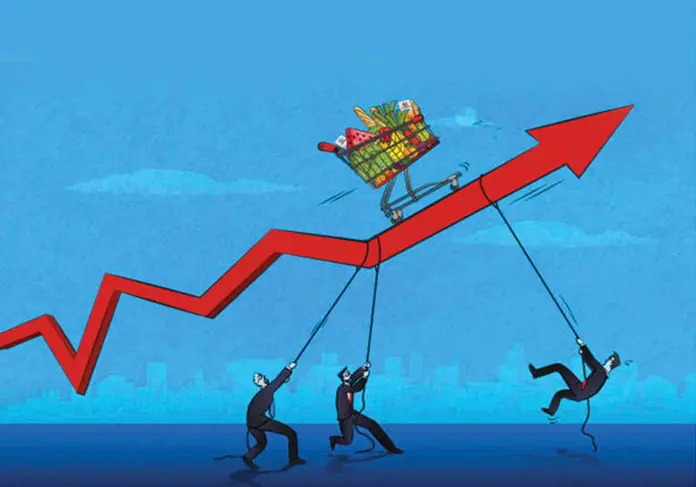Consumer Price Index (CPI) inflation increased by 28.3% in the first month of the new fiscal year, primarily as a result of rising food and energy costs.
It did, however, slow down slightly from the 29.4 percent in June. According to information made public by the Pakistan Bureau of Statistics on Tuesday, the CPI inflation rate rose by 3.5 percent month over month in July.
Electricity costs rose by 39.88% in July, while petrol prices increased by 62.82% and the price of wheat flour increased by 102.43% every year.
The average CPI is expected to be 25.9 percent for FY24, according to the International Monetary Fund, a considerable decrease from the previous year’s 29.6 percent. For the current fiscal year, the government has set an annual inflation target of 21%.
Inflation is only predicted to fall below 20 percent in the fourth quarter of FY24, according to the most recent IMF study.
Due to the extraordinary devaluation of the rupee, an increase in local taxes, and rising global commodity prices, the annual inflation rate in FY23 remained at 29.18 percent, above the budgetary objective of 11.5 percent. Inflation in FY22 was 12.15 percent.
As a result of the harsh steps the PML-N-led government enacted in response to the International Monetary Fund’s demands to release frozen financing, inflation has been on the rise since mid-2022.
From June of last year until January, inflation was consistently more than 20 percent. The percentage then reached 31.6 in February, crossed the 35 mark in March, and increased to 36.4 in April, 37.97 in May, and 29.4 in June. In July 2022, the value was 24.93%.
On the other hand, a high-base effect in July reduced monthly inflation, which is measured by the CPI, a basket of goods and services.
The forecast for global commodity prices is encouraging and might help lessen the effects of currency devaluation, according to the finance ministry.
For July, food inflation in urban and rural areas was 40.2 and 41.3 percent, respectively, while non-food inflation was 17.3 and 22 percent, respectively.
In July, non-perishable food goods increased by 42.14 percent, while perishable food items increased by 23.51 percent.
Core inflation, which excludes food and energy, was 24.6 percent in rural areas and 18.4 percent in urban areas. The interest rate has now been raised by the government to a record-high 22 percent for the nation.







